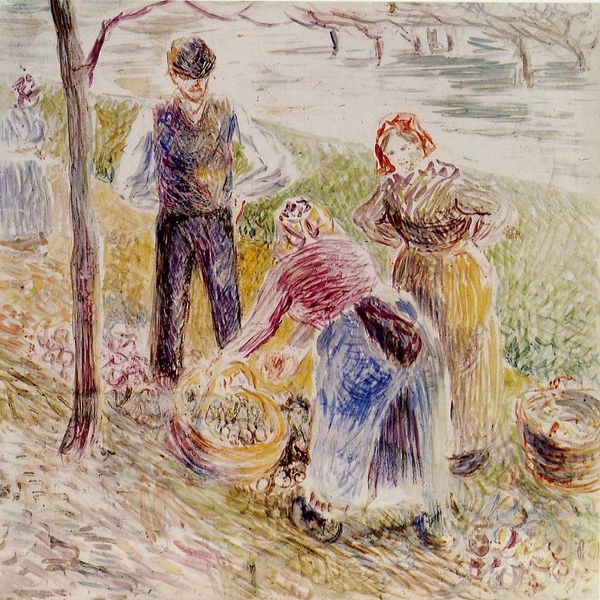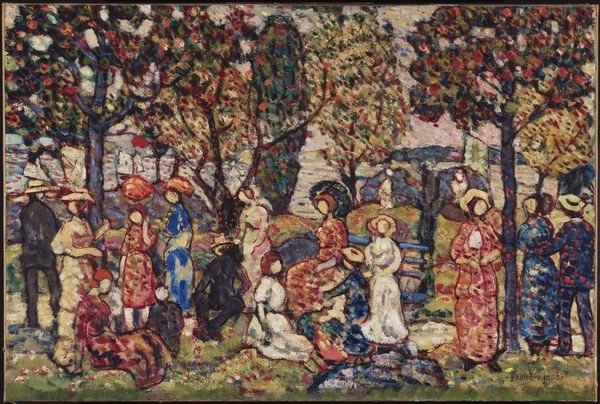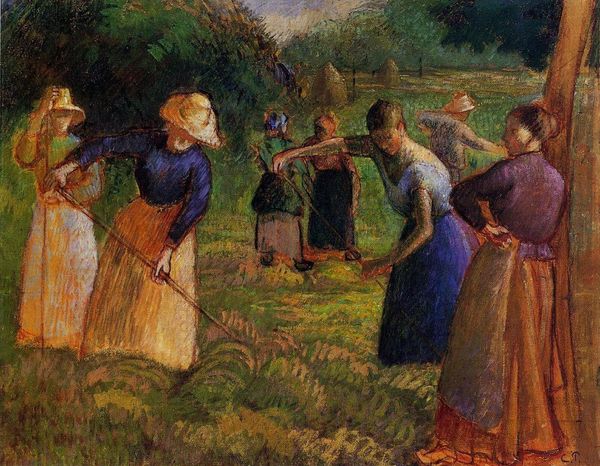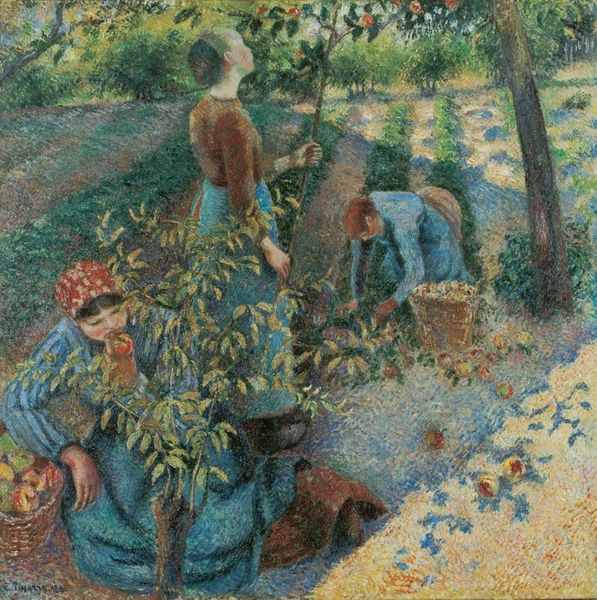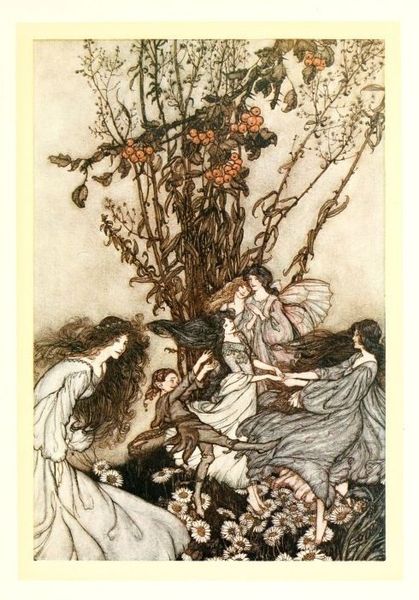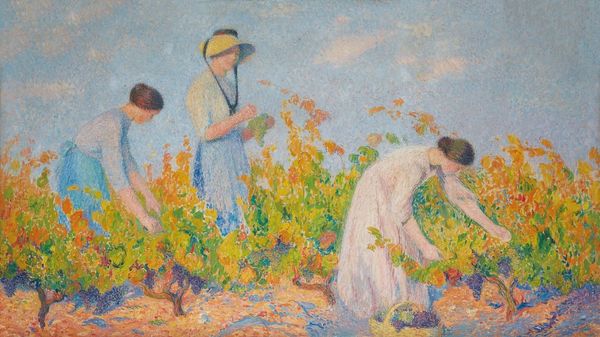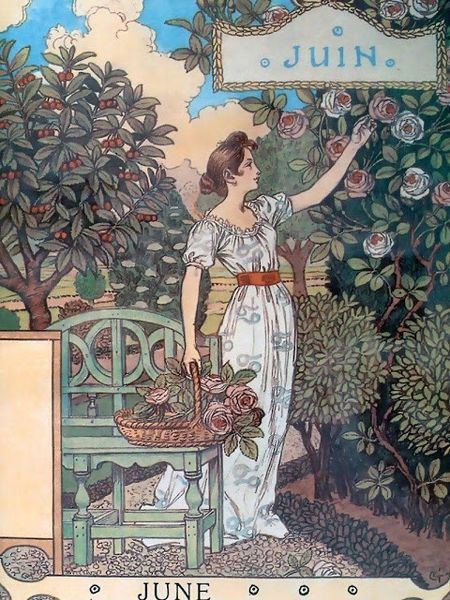
Peasants Planting Pea Sticks (also known as Peasants planting in the field) 1890
0:00
0:00
camillepissarro
Ashmolean Museum, Oxford, UK
painting, plein-air, oil-paint
#
painting
#
impressionism
#
plein-air
#
oil-paint
#
landscape
#
oil painting
#
genre-painting
#
realism
Dimensions: 99 x 152.4 cm
Copyright: Public domain
Curator: Here we have Camille Pissarro's "Peasants Planting Pea Sticks," also known as "Peasants planting in the field," dating to 1890. It's currently held at the Ashmolean Museum in Oxford. Editor: My first impression is how balanced the composition is, almost like a tapestry. It has an earthy feel, yet also something idyllic in its portrayal of labour. Curator: Precisely. Pissarro was deeply interested in depicting the realities of rural labour, especially through the lens of Impressionism and, to some extent, Realism. The physicality of working the land is made visible through these figures' postures, and we can clearly identify that Pissarro created the artwork "en plein-air," giving insight to what agricultural labor looks like through observation. Editor: Considering the social context, it's also vital to think about Pissarro’s political beliefs. His engagement with anarchist thinkers is crucial to understanding why he focused on the dignity of working-class life. He's elevating this common scene to a significant subject worthy of artistic representation. Curator: And look at the paint application itself! He utilizes short, broken brushstrokes of pure colour which is highly indicative of his impressionist methods, to represent the texture of the fields, the foliage and the garments, so labor could almost seem to meld into the landscape itself. It's almost democratising the act of painting, a type of material equity! Editor: Indeed. We often view Impressionism through the lens of fleeting moments, but works like this challenge that narrative. Pissarro's emphasis on peasants' labor shows an intentional decision. Moreover, museums are increasingly showing these aspects to speak to today's public around representation and recognition. Curator: Pissarro had the skills to turn these common everyday acts of planting into art, bringing social, economic, and agricultural awareness. Editor: Absolutely, seeing this piece helps one question the art historical status-quo on what exactly has historically made its way into institutions and why.
Comments
No comments
Be the first to comment and join the conversation on the ultimate creative platform.



